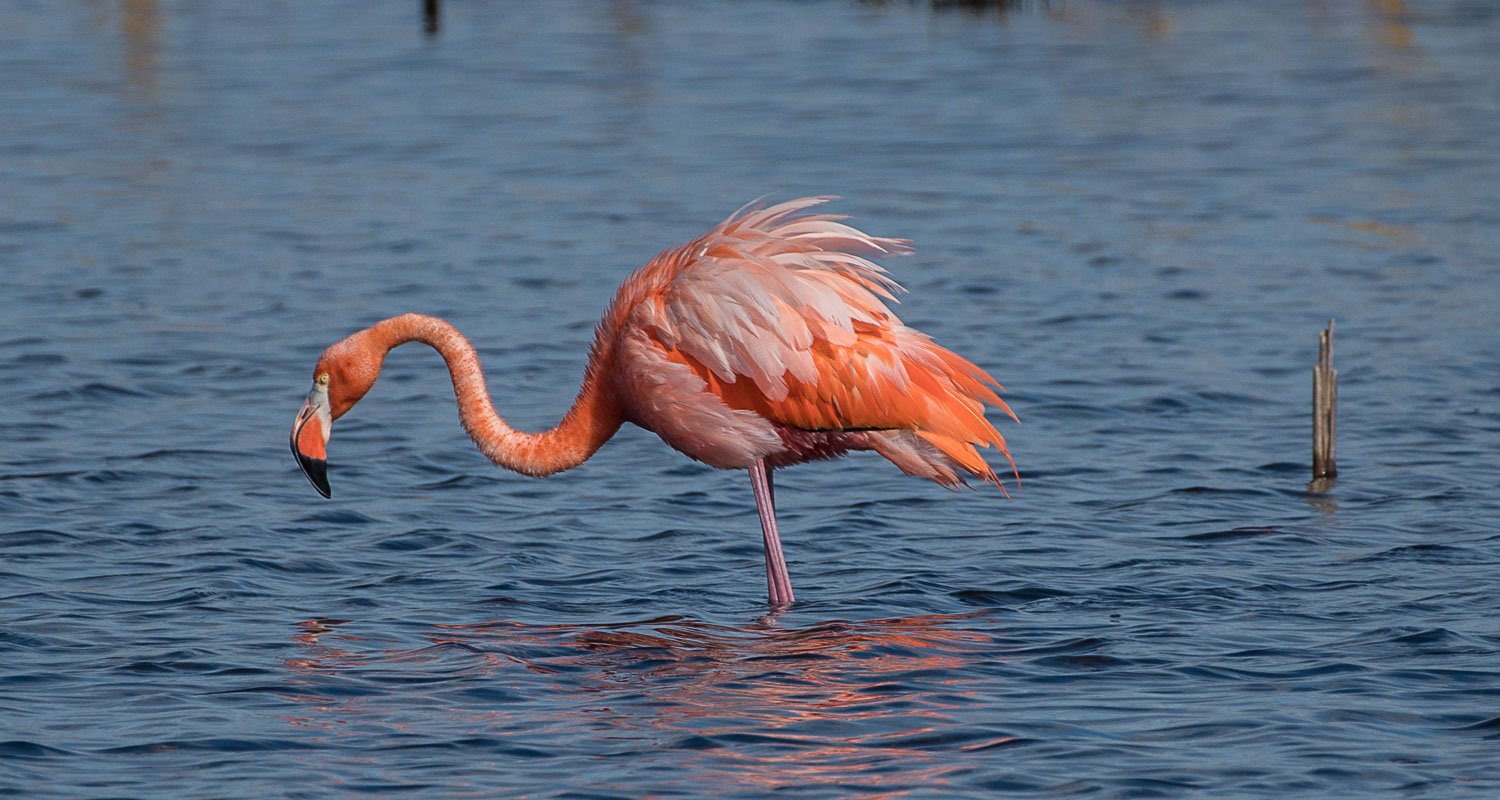Birds caught in the winds of a hurricane may seek shelter by staying within the calm eye of the hurricane, flying along within the eye to avoid the surrounding winds until the hurricane makes landfall and collapses. Typically, species that are entrained in a hurricane’s eye include seabirds: terns, gannets, frigatebirds and petrels. American Flamingos, though, are sometimes entrained by hurricanes and transported to the upper Gulf coast.
Hurricane Michael developed in the Southwestern Caribbean in early October of 2018. It crossed the Western tip of Cuba and made landfall in the Florida panhandle at Mexico Beach. Three weeks later an American Flamingo was sighted at St. Marks NWR. This bird may have originated from the large Cuban flamingo population and would have spent three days entrained in Michael’s eye as it crossed the Gulf.
Hurricane-driven Flamingos have a long history of occurrence at St. Marks. In all previous flamingo sightings in the 1960s, 70s and 90s, flamingos had been discovered shortly after a hurricane made landfall. In all of the previous flamingo sightings, the flamingos disappeared after a short period. This flamingo, however, remained at the refuge through June of 2019.
A sighting in Tennessee shortly after the St. Marks flamingo disappeared was assumed by many to have been this bird. However, there had been sporadic reports with photos on non-birding sites like Facebook, of a flamingo West of here, which may have been one of two Pensacola flamingos that showed up after a 2017 hurricane, but soon disappeared. We can’t know for certain where the Tennessee bird came from. In any event, our flamingo had left St. Marks.
In December of 2019, a flamingo was again sighted at St. Marks and stayed through June of 2020. This flamingo was not associated with a hurricane and was assumed to be the Hurricane Michael flamingo. After it left, there were at least two flamingo reports in coastal Georgia NWRs over the following Summer that were presumed to be this bird.
In October of 2020 a flamingo was once again sighted at St. Marks and continued at the refuge through March of 2022. Neither this sighting nor the 2019 sighting was associated with a hurricane. We are only assuming that these three flamingo occurrences are the same bird and this site fidelity to the St. Marks refuge is a decidedly odd behavior for a flamingo, but its provenance as a naturally-occurring flamingo is widely accepted.
This morning, while scanning for birds on East River Pool at sunrise, I sighted an American Flamingo. I cannot tell for certain that this is the same flamingo, but it is pink like all of the birds in the previous three sightings.
There’s always something interesting going on at your local wildlife refuge.





